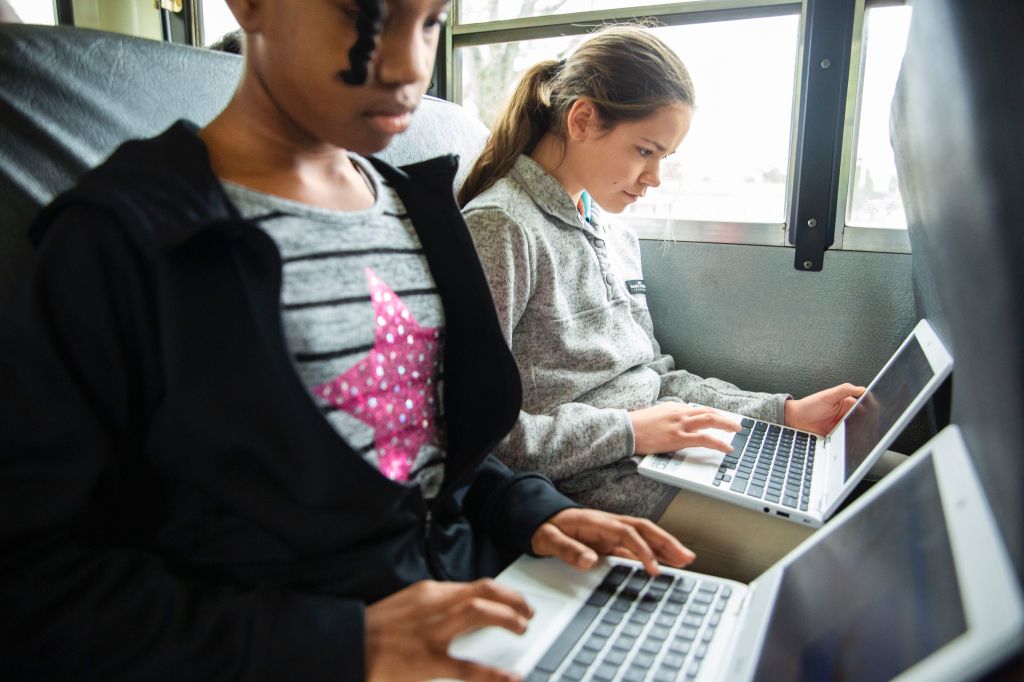Closing the Gap

Students who go to school in Talladega County, Alabama, are given a laptop or a tablet. They use these devices in class and take them home at the end of the day.
But Talladega County is in a rural
rural
 FEIFEI CUI-PAOLUZZO—GETTY IMAGES
having to do with the countryside or the people who live there
(adjective)
Melinda drove her car down a rural road.
part of Alabama. Many students live in small towns or in the countryside. The towers and underground cables that provide Internet access don’t always reach these areas. In some homes, it’s impossible even to access the Internet.
FEIFEI CUI-PAOLUZZO—GETTY IMAGES
having to do with the countryside or the people who live there
(adjective)
Melinda drove her car down a rural road.
part of Alabama. Many students live in small towns or in the countryside. The towers and underground cables that provide Internet access don’t always reach these areas. In some homes, it’s impossible even to access the Internet.
Experts have a name for this situation. They call it the “homework gap,” because it’s difficult—nearly impossible—for some students to do homework that requires them to get online. “When you go home at the end of the day and you can no longer access the same information and technology tools as some of your classmates—that’s the homework gap,” Beth Holland told TIME for Kids. She works at the Consortium for School Networking.
Driving Change
The homework gap isn’t just a problem in Talladega County. According to a Pew Research Center study, about one in five homes with school-age kids doesn’t have high-speed Internet access. And 17% of teens say that lack of steady Internet access sometimes means they can’t do their homework. “Kids are being excluded
exclude
 BLUE JEAN IMAGES/GETTY IMAGES
to leave out
(verb)
Our mom won't let us exclude our baby sister when we play games.
from learning opportunities,” Holland says.
BLUE JEAN IMAGES/GETTY IMAGES
to leave out
(verb)
Our mom won't let us exclude our baby sister when we play games.
from learning opportunities,” Holland says.
Schools across the country have found creative ways to close the homework gap. In some school libraries, students can borrow mobile hot spots, which use cell-phone networks to access the Internet. (These work in some, but not all, rural areas.) Students in several communities have created Wi-Fi maps. Those let kids know about local businesses, such as cafés, which provide Internet to their customers.
Talladega County created what it calls “rolling study halls.” Many students ride the bus to and from school each day along country roads. The average ride each way is an hour. Some are as long as 90 minutes. In 2018, wireless Internet was installed on six school buses with long routes in rural areas. Now students can do homework during their daily rides. A teacher comes along to help.
“It’s been a game changer,” Vicky Ozment says. She’s the deputy superintendent for Talladega County Schools. “It leveled the playing field.”














